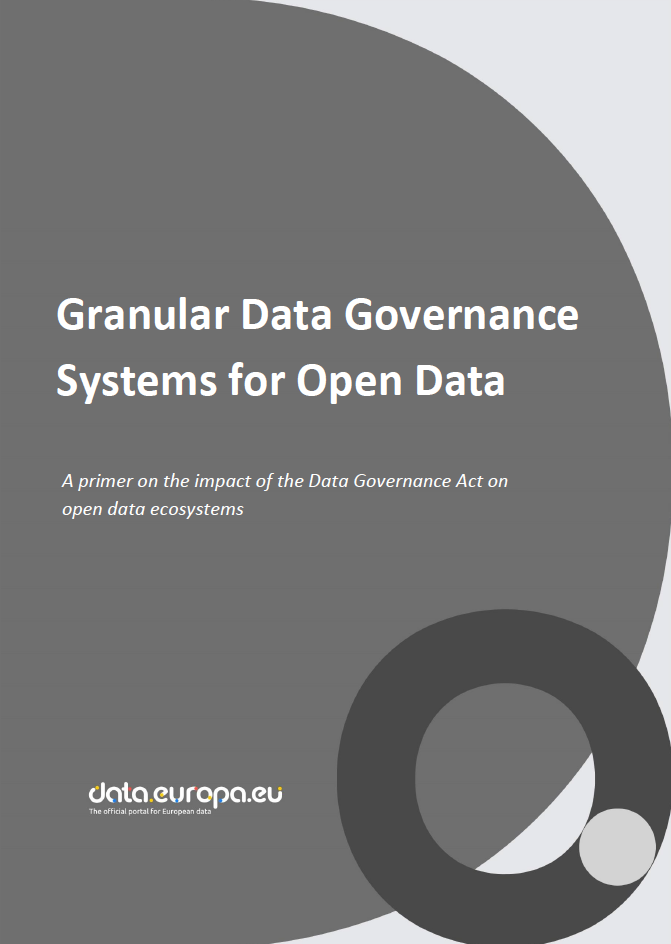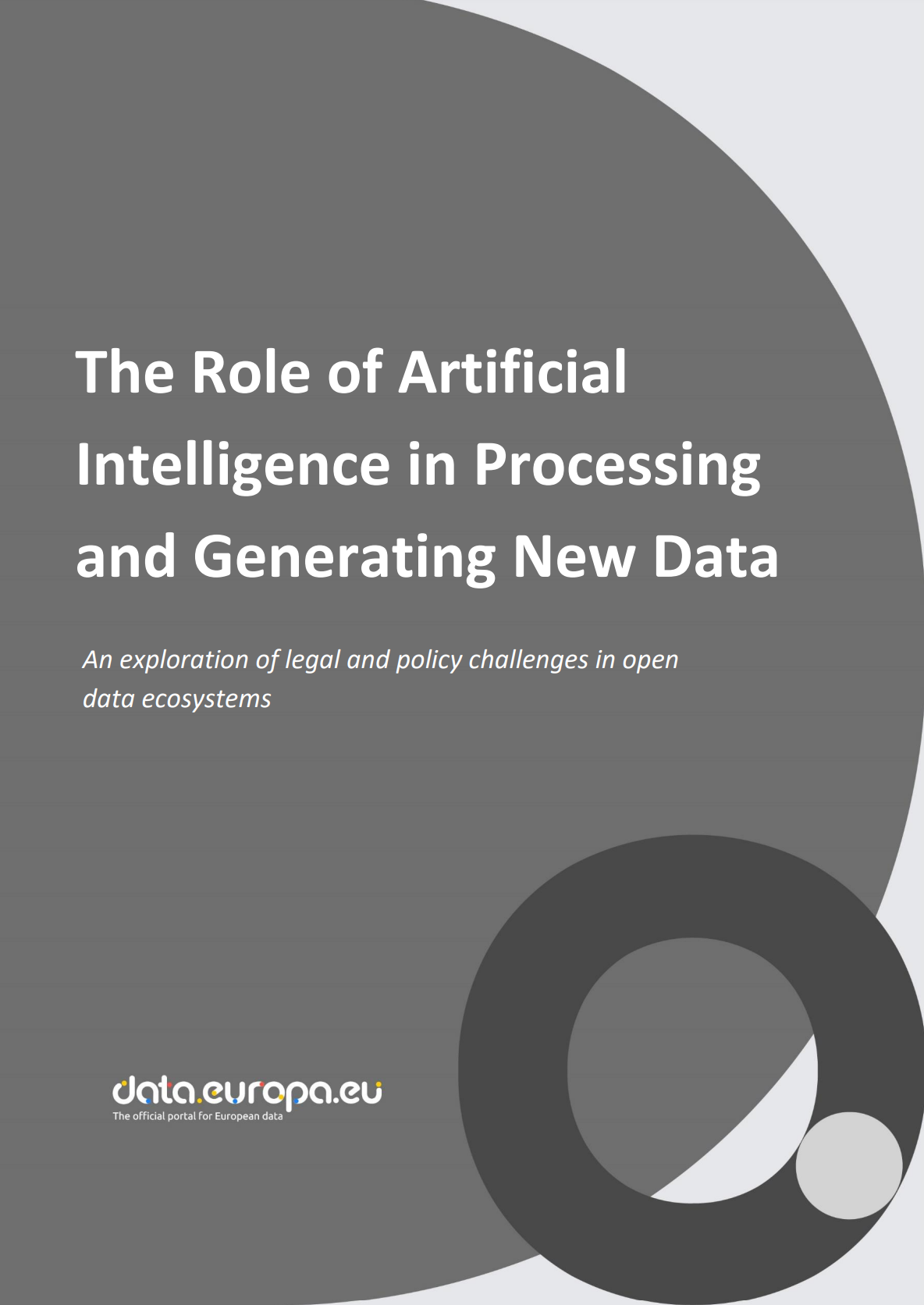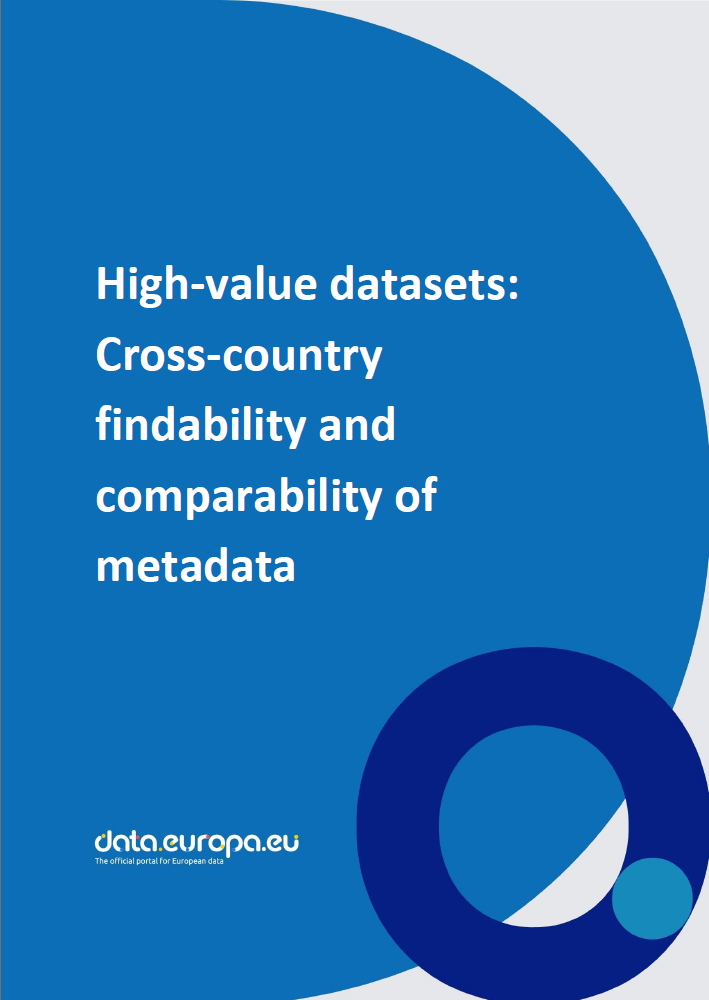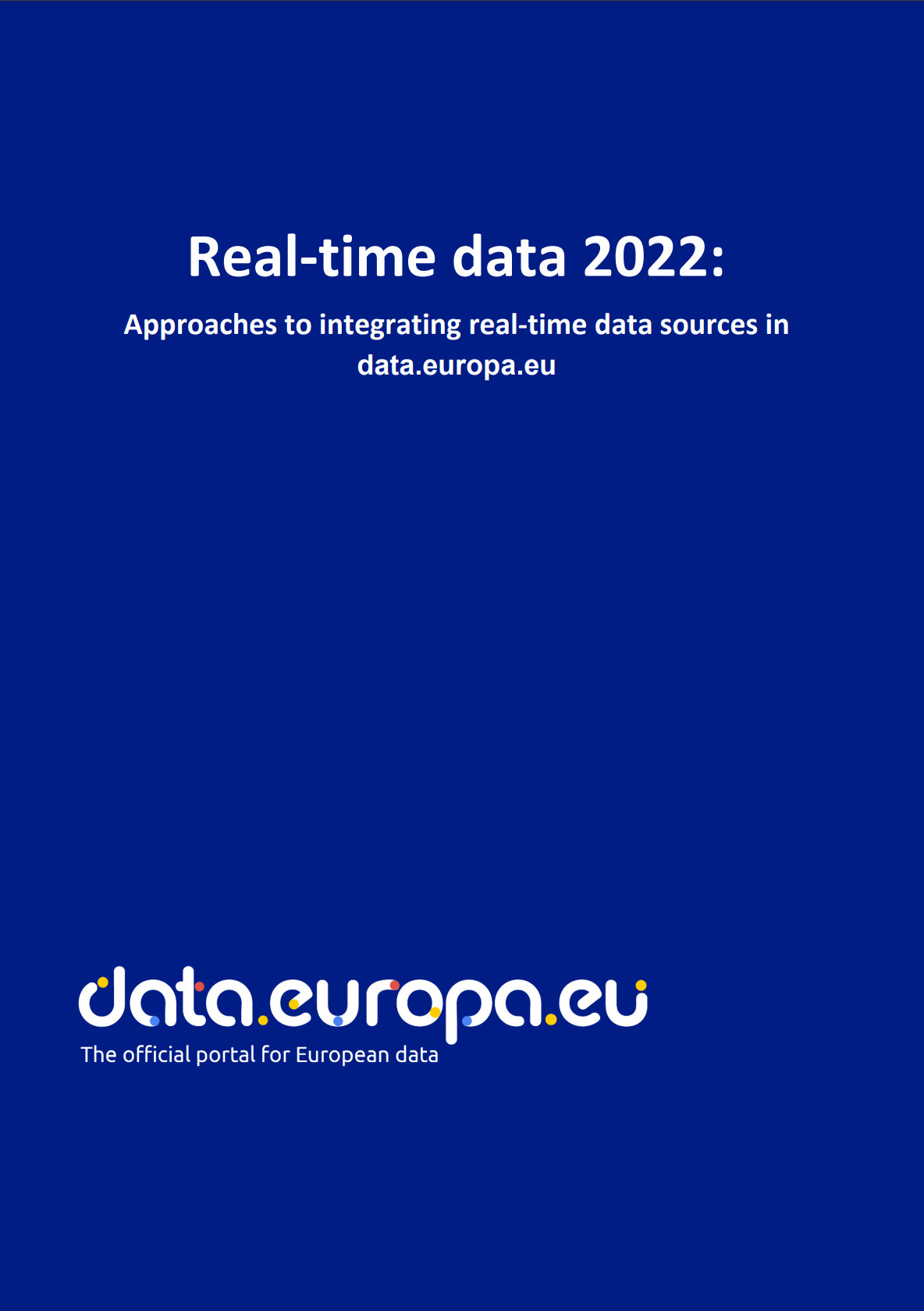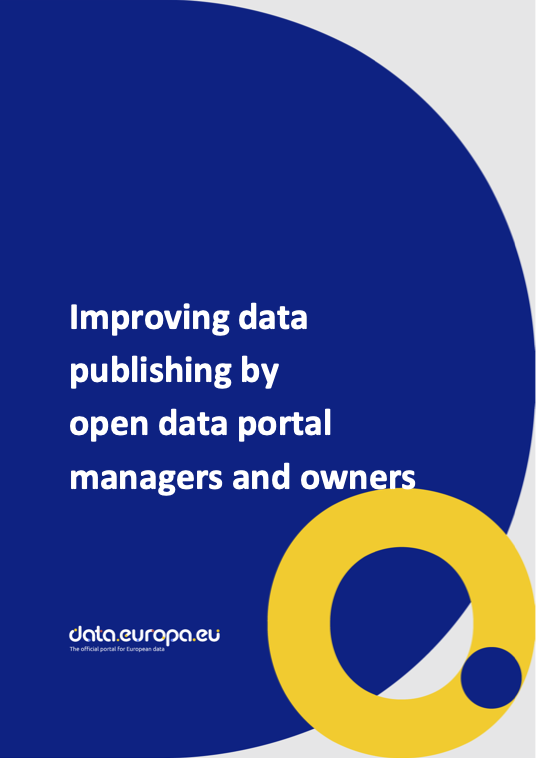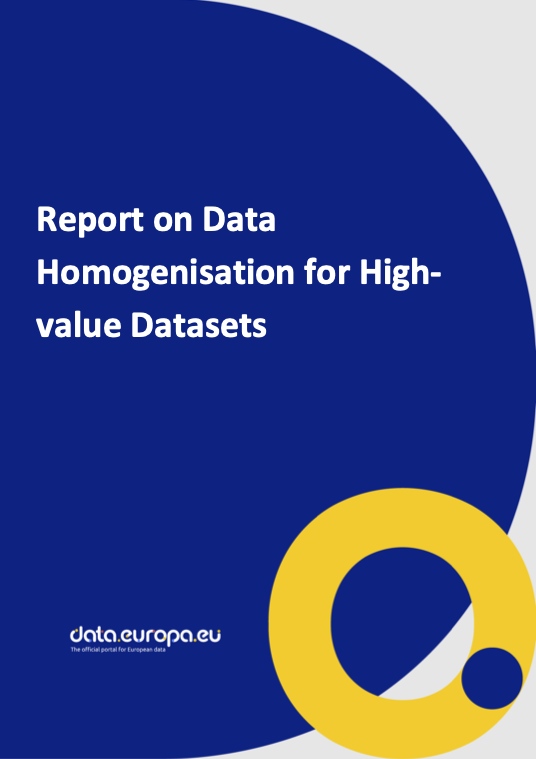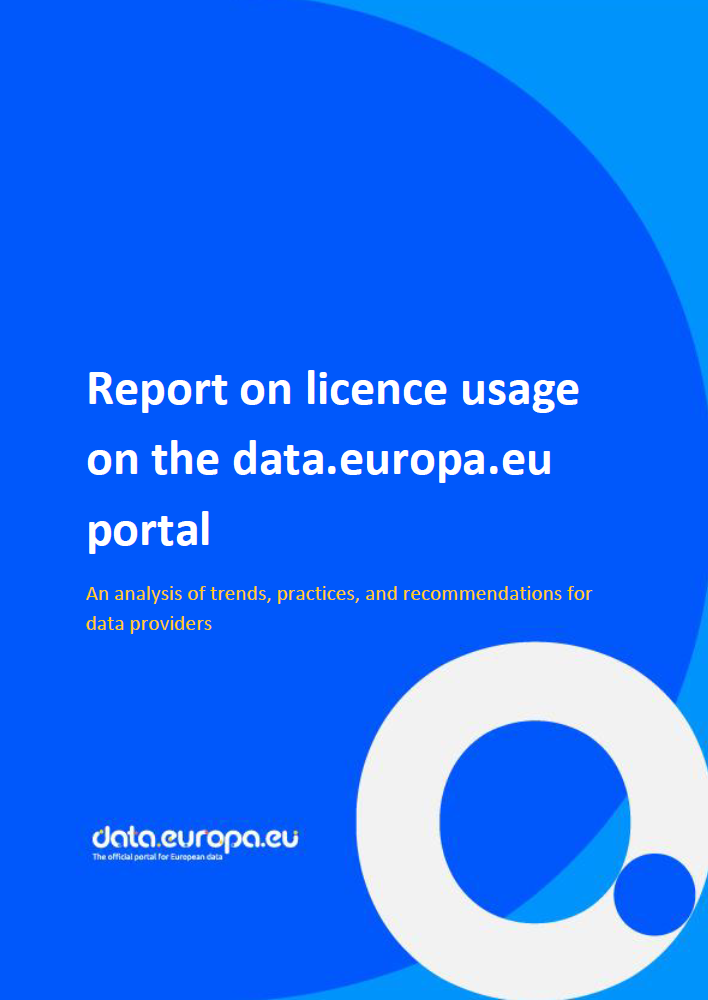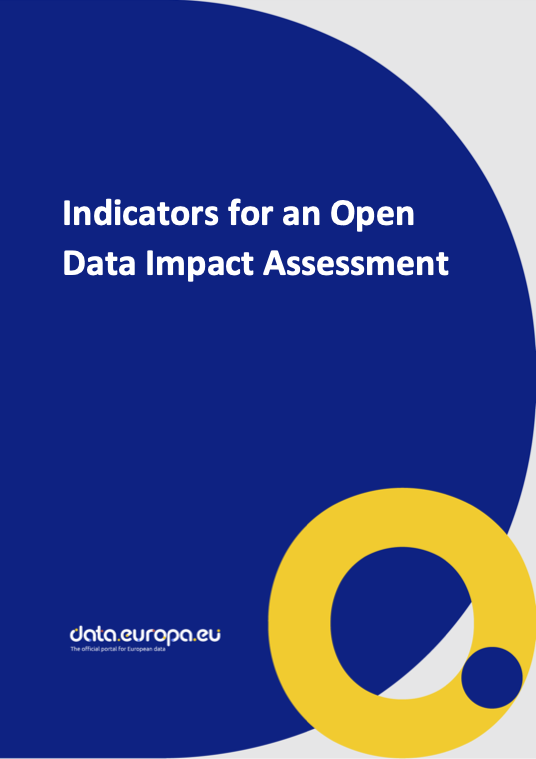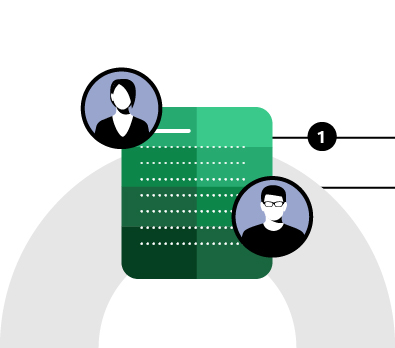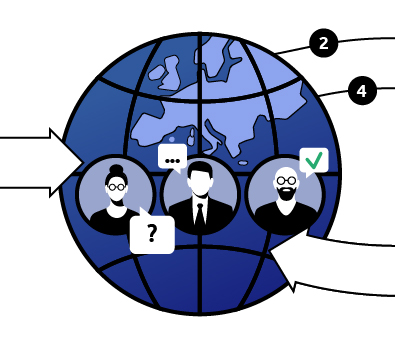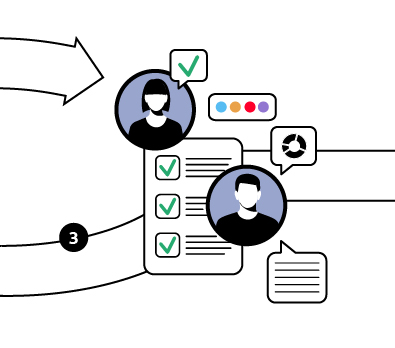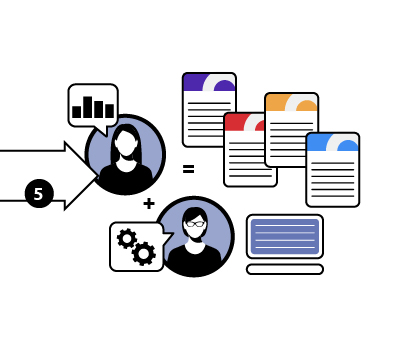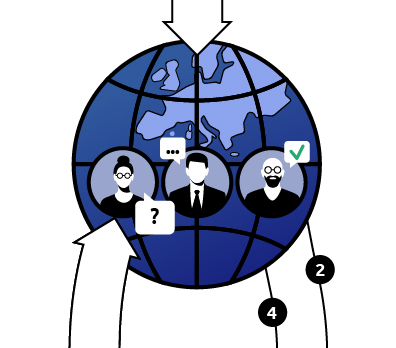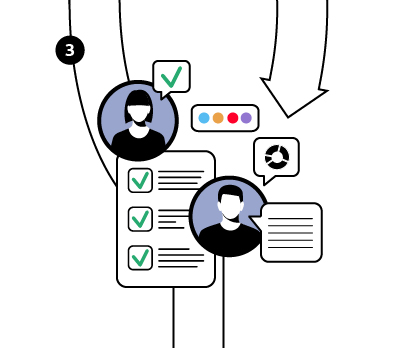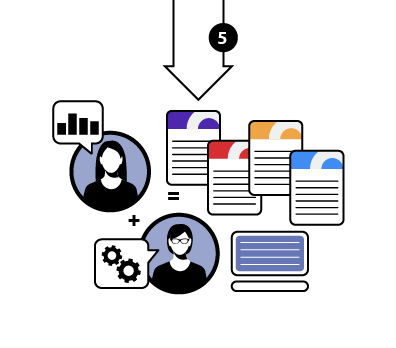Open data in Europe 2024
The open data maturity (ODM) assessment is an annual exercise conducted to measure the progress of European countries in promoting and facilitating the availability and reuse of public sector information. The assessment methodology evaluates developments in open data initiatives across four thematic dimensions: policy, portal, quality and impact. Maturity in these four dimensions is aggregated into an overall score that shows a country’s open data maturity.

The open data maturity (ODM) assessment is an annual exercise conducted to measure the progress of European countries in promoting and facilitating the availability and reuse of public sector information. The assessment methodology evaluates developments in open data initiatives across four thematic dimensions: policy, portal, quality and impact. Maturity in these four dimensions is aggregated into an overall score that shows a country’s open data maturity.

Recommendations
To identify affinities, the participating countries are grouped into four clusters based on their overall maturity scores. Countries in the same cluster can discuss strategies to overcome shared challenges. Moreover, countries in less mature clusters can learn from those in more mature clusters. Clustering also enables more focused recommendations to be formulated for each group of countries.
Cluster motto:
Build momentum for open data progress
Develop a national strategy for open data and align it with broader strategies at the national level (e.g. digital strategies and strategies for the modernisation of the public sector). Ensure the development of legal frameworks and ethical guidelines to govern the use of open data and, overall, safeguard sensitive and personal information.
Key example
Malta’s Public Administration Data Strategy 2023–2027, inspired by its Economic Vision 2021–2031, National Digital Strategy and Five-Year Strategy for the Public Service, addresses key data challenges and developments. Its vision is to create a data-empowered society with transparent, effective and regulated data governance. The strategy aims to enhance public trust and accountability by making government data more accessible while fostering innovation and economic growth by enabling businesses to use public data for new products and services. Key steps include improving data accessibility through user-friendly formats, collaborating with stakeholders to prioritise valuable datasets and establishing clear governance structures. It also promotes international standards for data publication to ensure consistency and interoperability across platforms.
Example provided by
Malta
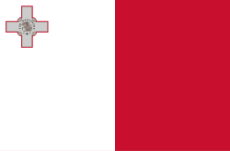 Rally support for the open data programme and political leadership from the top level of government. Showcase international research on the value of open data to emphasise the economic benefits of data exploitation. Use high-value datasets as a point of focus.
At the national level, set up a team in charge of open data to ensure coordination of activities within the country and set up roadshows to promote the scope of the team and its activities with primary public administrations. Include all levels of government in this process.
Key example
Rally support for the open data programme and political leadership from the top level of government. Showcase international research on the value of open data to emphasise the economic benefits of data exploitation. Use high-value datasets as a point of focus.
At the national level, set up a team in charge of open data to ensure coordination of activities within the country and set up roadshows to promote the scope of the team and its activities with primary public administrations. Include all levels of government in this process.
Key example
Croatia fosters collaboration across government bodies through the Working Group for the Coordination of State Information Infrastructure Projects and Digital Transformation. This group, which includes representatives from various governmental entities responsible for digitalisation, such as the open data team and open data officers, meets regularly to discuss updates and share progress on digital transformation initiatives.
Example provided by
Croatia
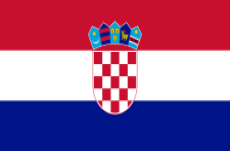 Organise a series of open data events at the national level and focus on engaging both data publishers and reusers in your country. Prioritise the promotion of data publication best practices and reuse cases during such events.
Key example
Organise a series of open data events at the national level and focus on engaging both data publishers and reusers in your country. Prioritise the promotion of data publication best practices and reuse cases during such events.
Key example
The Ministry of Digital Transformation of Ukraine organises various events to engage with civil society on topics such as open data’s role in the low-carbon economy. The ministry launched the Open Data for Business series on the Diya.Osvita platform, explaining open data’s benefits for business development. Additionally, educational training sessions on Open Data for the Public and Business were held to teach activists, journalists and researchers how to use open data for transparency and research. A training course for journalists was also launched, focusing on data analysis and visualisation skills.
Example provided by
Ukraine
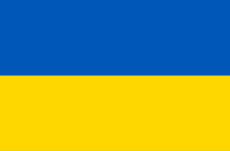 Set up relevant communication channels and contacts for data publication within public administrations (e.g. open data liaison officers). Maintain an active dialogue with these contacts and enable regular exchange of knowledge among them, focusing on efficient online channels and face-to-face meetings.
Key example
Set up relevant communication channels and contacts for data publication within public administrations (e.g. open data liaison officers). Maintain an active dialogue with these contacts and enable regular exchange of knowledge among them, focusing on efficient online channels and face-to-face meetings.
Key example
In Bulgaria, the Network of Open Data Liaison Officers is made up of representatives of all Bulgarian public authorities, coordinated by the national open data team. The network meets periodically to discuss the promotion and monitoring of open data within their organisations and with stakeholders. The national open data team also uses this network to send information to all public bodies, such as information about events, training, new portal features and support. The members of this network are also the points of contact for specific enquiries about the reuse of data published by their organisation, ensuring that responses are provided to requests and questions.
Example provided by
Bulgaria
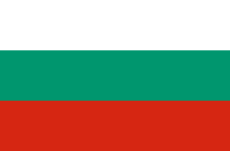 Identify the primary data holders in the country and understand the main concerns and barriers to data publication. Take the first steps to overcome these barriers and unlock the publication of data.
Key example
Identify the primary data holders in the country and understand the main concerns and barriers to data publication. Take the first steps to overcome these barriers and unlock the publication of data.
Key example
In Luxembourg, various activities are implemented to assist data owners in opening their datasets. For example, advisory meetings are held where data owners discuss their datasets and inventory documents, allowing for the identification of obstacles that may have hindered data openness. The team offers legal guidance and technical support, develops custom harvester scripts, assists data owners in creating automated publication scripts and maintains centralised infrastructures (e.g. the national Inspire platform, the national geoportal and the HVD4Gov platform). These efforts streamline the preparation, description, modification and publication of data, ensuring efficient and accessible data sharing. These infrastructures establish a clear workflow that ensures data becomes accessible as open data, and that it is searchable, downloadable or usable via application programming interfaces and web services on the national open data portal.
Example provided by
Luxembourg
 Organise workshops and awareness-raising sessions with the primary data holders. Use materials already developed in other countries and at the European level for content and as a source of inspiration.
Key example
Organise workshops and awareness-raising sessions with the primary data holders. Use materials already developed in other countries and at the European level for content and as a source of inspiration.
Key example
Portugal fosters engagement with key data holders through various initiatives, including webinars, workshops, public presentations, datathons and hackathons, to promote dialogue and encourage public bodies to monitor the reuse of their published data. Examples include events such as the Data Strategy in Public Administration webinar, the High-Value Datasets workshop and Open Data Day. Additionally, direct contact with data publishers via the national data portal is maintained to monitor portal activity and incentivise public entities to track user engagement.
Example provided by
Portugal
 Begin exploring high-value datasets by reviewing the legislation that came into effect in June 2024. As a best practice, consider adding a dedicated section on the portal to provide users with updates and a general overview of what high-value datasets are. As a next step, consider labelling relevant datasets as high-value datasets to increase their visibility and encourage reuse on the portal.
Key example
Begin exploring high-value datasets by reviewing the legislation that came into effect in June 2024. As a best practice, consider adding a dedicated section on the portal to provide users with updates and a general overview of what high-value datasets are. As a next step, consider labelling relevant datasets as high-value datasets to increase their visibility and encourage reuse on the portal.
Key example
In Slovenia, the Decree on Communication and Re-use of Public Sector Information of Public Character further specifies a list of national databases that qualify as high-value datasets. The decree introduces metadata schema enhancements, allowing each database of high-value datasets to be clearly identified. As a result, users can easily filter and access these databases on the national open data portal and view all high-value datasets.
Example provided by
Slovenia
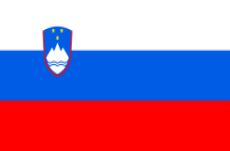 Develop guidelines to enable the publication of data and its metadata and the take-up of suitable licensing conditions. If standard licences are not appropriate, as a last resort, evaluate the development of a customised national licence. Learn from European best practices and reach out to colleagues in other countries when setting out to create such guidelines. Raise awareness among the leading data publishers of the importance of metadata and promote the DCAT-AP standard, specifications and existing guidelines developed at the European level.
Key example
Develop guidelines to enable the publication of data and its metadata and the take-up of suitable licensing conditions. If standard licences are not appropriate, as a last resort, evaluate the development of a customised national licence. Learn from European best practices and reach out to colleagues in other countries when setting out to create such guidelines. Raise awareness among the leading data publishers of the importance of metadata and promote the DCAT-AP standard, specifications and existing guidelines developed at the European level.
Key example
Finland provides comprehensive guidance on its national open data portal regarding the publication of data and metadata. The page includes a summary of relevant terminology; reasons metadata is important; how to publish data with its relevant metadata; and best practices from other public organisations. Additionally, it provides resources such as training courses on improving the quality of open data and its metadata.
Example provided by
Finland
 Ensure you build and maintain a modern portal that enables the publication and discoverability of open data. Scout for European best practices and compare solutions to choose the most adequate ones to support your scope and mission. Set up dedicated news and blog sections to promote relevant developments and showcase reuse. Ensure feedback channels are seamlessly integrated into the national portal. Be aware of users’ rights and privacy while performing web analysis and choose your technology carefully.
Ensure that the national open data strategy guarantees the scoping, management and funding of the portal. Use action plans that mention concrete activities and the entities or people responsible for ensuring the strategy can be carried out. Ensure sufficient resources are allocated to open data awareness-raising activities involving publishers and potential reusers.
Key example
Ensure you build and maintain a modern portal that enables the publication and discoverability of open data. Scout for European best practices and compare solutions to choose the most adequate ones to support your scope and mission. Set up dedicated news and blog sections to promote relevant developments and showcase reuse. Ensure feedback channels are seamlessly integrated into the national portal. Be aware of users’ rights and privacy while performing web analysis and choose your technology carefully.
Ensure that the national open data strategy guarantees the scoping, management and funding of the portal. Use action plans that mention concrete activities and the entities or people responsible for ensuring the strategy can be carried out. Ensure sufficient resources are allocated to open data awareness-raising activities involving publishers and potential reusers.
Key example
A significant initiative supporting Ireland’s goals is the Open Data Engagement Fund, which provides funding for projects aimed at enhancing the availability and use of open data. This includes outreach and advocacy activities, such as seminars, workshops and conferences, to encourage public bodies to release and use open data. The fund also supports innovative uses of open data, such as the creation of apps, new products or services, hackathons and interactive visualisations, leveraging data from data.gov.ie either alone or combined with other sources. Additionally, it finances research and special projects that use specific datasets to improve efficiency in public bodies, inform government decision-making and explore pressing social issues such as housing, the environment and transport.
Example provided by
Ireland

Cluster motto:
Establish open data foundations and aim for higher quality
Update the national strategy for open data to reflect technical and policy developments at the EU level. If you have not yet done so, develop a definition of open data impact, setting up a framework to measure the positive benefits for society of reusing open data.
Key example
Denmark updates its national open data strategy through continuous improvement at the operational, strategic and international levels. The team managing the portal focuses on onboarding authorities, leveraging political agendas and aligning with EU standards, such as by harmonising metadata and interpreting legal requirements. Strategic direction is shaped at two levels: national and joint government. At the national level, EU legislation is incorporated into Danish law, guiding decisions such as reusing the national data portal for Data Governance Act purposes. Funding and political support are driven by national digital government strategies and state budget allocations. At the joint government level, municipalities, regions and the national government collaborate on four-year digital government strategies. These strategies offer opportunities to adapt open data policies in response to legislative changes, political priorities, technological advancements and past experiences.
Example provided by
Denmark
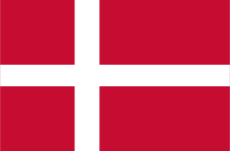 Set up a governance structure that accounts for the characteristics of your country. Engage potential reuse groups (e.g. data companies, research institutions and NGOs) in open data governance in your country. This will enable co-ownership based on a common vision and buy-in for the initiatives in each sector.
Key example
Set up a governance structure that accounts for the characteristics of your country. Engage potential reuse groups (e.g. data companies, research institutions and NGOs) in open data governance in your country. This will enable co-ownership based on a common vision and buy-in for the initiatives in each sector.
Key example
In Estonia, a comprehensive governance structure is in place to facilitate the participation and inclusion of various open data stakeholders. Firstly, the Ministry of Economic Affairs and Communications leads open data policy and has established an Interdepartmental Open Data Working Group, along with a Data Stewards Steering Group, to coordinate its network of over 600 public sector officials through information sharing, surveys and event promotion (e.g. the annual Open Data Forum and specialised workshops), ensuring participation and collaboration across sectors.
- Interdepartmental Open Data Working Group. This group includes members from multiple public sector organisations and ministries. It meets regularly and welcomes participation from a broad network of approximately 600 data-related experts, along with non-members from civil society, private companies and academia, to share updates, exchange experiences and discuss upcoming developments.
- Data Stewards Steering Group. Established by the Ministry of Economic Affairs and Communications together with other public authorities, the Data Stewards Steering Group brings together data stewards from various public authorities to ensure the sustainable and balanced development of the data field. This group focuses on topics such as data retrieval, data quality improvement, data reuse, data life cycle management and data protection requirements.
Example provided by
Estonia
 Develop a yearly plan for online activities (e.g. events and conferences) to promote open data. Focus on formats that encourage publication and reuse by both the public and the private sector. Experiment with formats that both leverage creativity (e.g. hackathons) and enable the development of business opportunities on medium- to long-term engagements (e.g. data challenges). Ensure funding and political sponsorship for the winning ideas. Promote and monitor the performance of products and services that are developed.
Key example
Develop a yearly plan for online activities (e.g. events and conferences) to promote open data. Focus on formats that encourage publication and reuse by both the public and the private sector. Experiment with formats that both leverage creativity (e.g. hackathons) and enable the development of business opportunities on medium- to long-term engagements (e.g. data challenges). Ensure funding and political sponsorship for the winning ideas. Promote and monitor the performance of products and services that are developed.
Key example
The Ministry of Digital Transformation of Ukraine organises various events to engage with civil society on topics such as open data’s role in the low-carbon economy. The ministry launched the Open Data for Business series on the Diya.Osvita platform, explaining open data’s benefits for business development. Additionally, educational training sessions on Open Data for the Public and Business were held to teach activists, journalists and researchers how to use open data for transparency and research. A training course for journalists was also launched, focusing on data analysis and visualisation skills.
Example provided by
Ukraine
 Analyse user behaviour on the data portal responsibly, ensuring user privacy and being explicit about how insights will be used. Identify communities of reusers and conduct awareness-raising activities on open data within these groups (e.g. universities, data start-ups and data companies, research institutes, NGOs and journalists).
Key example
Analyse user behaviour on the data portal responsibly, ensuring user privacy and being explicit about how insights will be used. Identify communities of reusers and conduct awareness-raising activities on open data within these groups (e.g. universities, data start-ups and data companies, research institutes, NGOs and journalists).
Key example
In France, the ministerial roadmaps on data, algorithms and source code policy include 19 commitments specifically focused on fostering community engagement and knowledge exchange with data reusers, civil-society organisations, academia, journalists and businesses. The central open data team within Etalab plays a pivotal role in facilitating these exchanges. Key activities include the following.
- Participating in events organised by the French Information Industry Grouping and its Working Group on Open Data. This includes discussions and knowledge sharing on open data policies and practices (more details are available at GFII Open Data Group).
- Engaging with data producers and reusers prior to implementing data schemas and publishing them on the schema.data.gouv.fr platform. An example of such discussions can be found here.
- Gathering feedback from users of the national open data portal, data.gouv.fr, particularly regarding the portal’s features and user experience. A group of beta testers has been established to provide ongoing feedback.
- Organising public demonstrations at which Etalab presents its latest advancements on the data.gouv.fr portal. These demonstrations not only showcase progress but also serve as an additional platform for public agents to collect feedback from both data reusers and data providers.
Example provided by
France
 Encourage the network of open data liaison officers to set up data publication plans and monitor progress against these plans. Enable the open data officers to exchange knowledge and experience between public sector bodies and with the broader network of reusers. Deepen the understanding within the network of open data officers of the benefits of open data reuse by the public sector.
Ensure that pre-existing open data courses and training materials are leveraged and cooperate with public administrations and training organisations to develop open data training curricula for national, regional and local administrations. Enable such courses to be formally recognised and provide certification upon completion. Ensure financial resources are allocated at all administrative levels to training activities for civil servants working with data.
Key example
Encourage the network of open data liaison officers to set up data publication plans and monitor progress against these plans. Enable the open data officers to exchange knowledge and experience between public sector bodies and with the broader network of reusers. Deepen the understanding within the network of open data officers of the benefits of open data reuse by the public sector.
Ensure that pre-existing open data courses and training materials are leveraged and cooperate with public administrations and training organisations to develop open data training curricula for national, regional and local administrations. Enable such courses to be formally recognised and provide certification upon completion. Ensure financial resources are allocated at all administrative levels to training activities for civil servants working with data.
Key example
Estonia is implementing a comprehensive strategy for strengthening the data skills of its civil servants and ensuring effective data management and open data practices across the public sector. In 2024, Estonia aimed to train more than 2 500 data specialists over 10 targeted training courses and develop between one and four online courses. These training courses cover key areas such as data quality and open data publication, contributing to improved national open data standards. They have already had open data licensing training provided by Creative Commons and a data working group webinar. Estonia has also introduced detailed competence profiles for data engineers and analysts and is currently developing one for data stewards. These profiles serve as the foundation for nationwide training programmes and provide input for higher education curricula, ensuring future civil servants are equipped with relevant skills.
Example provided by
Estonia
 Enable meetings and engagement between reusers and publishers. Develop a deeper understanding of the demand side of open data and work with data providers to prioritise data publication in line with this demand. Focus on fostering open data reuse by the public and private sectors and encourage the community to share their reuse cases. Promote these open data use cases more prominently on the national portal, ideally in a section directly accessible from the homepage.
Implement editorial tools, such as labels or tags, to increase the visibility of high-value datasets on the portal and encourage reuse by enabling users to filter specifically for these datasets. It would be beneficial to include a dedicated section on the portal that provides users with the latest updates and a clear overview of high-value datasets and their significance.
Key example
Enable meetings and engagement between reusers and publishers. Develop a deeper understanding of the demand side of open data and work with data providers to prioritise data publication in line with this demand. Focus on fostering open data reuse by the public and private sectors and encourage the community to share their reuse cases. Promote these open data use cases more prominently on the national portal, ideally in a section directly accessible from the homepage.
Implement editorial tools, such as labels or tags, to increase the visibility of high-value datasets on the portal and encourage reuse by enabling users to filter specifically for these datasets. It would be beneficial to include a dedicated section on the portal that provides users with the latest updates and a clear overview of high-value datasets and their significance.
Key example
InPoland, several guidelines and tools are in place to assist data publishers in ensuring the publication of high-quality metadata. The following resources are available.
- Manual for data providers. This manual offers detailed instructions on how to publish data on the national data portal. It serves as a comprehensive guide for data providers on best practices in metadata creation and management.
- Open data programme for the years 2021–2027. This document, along with its Annex No 2 (‘Technical standard’), outlines the minimum technical requirements that data must meet to ensure consistency and quality across datasets. It is a crucial reference for use in maintaining high standards in metadata.
- Multimedia training materials. These resources provide additional guidance through video tutorials and other multimedia formats, making it easier for providers to understand and implement the guidelines.
- Tools. A data validator and data quality verifier are available to assist in monitoring and verifying the quality of metadata. These tools help ensure that the published metadata adheres to the required standards and is of high quality.
Example provided by
Poland
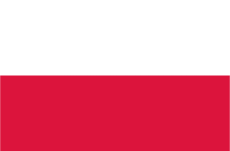 Conduct regular updates to the portal to reflect users’ needs. Include features such as feedback and interaction mechanisms at the dataset level, designated login areas for users, access via SPARQL queries and application programming interfaces in general. Consider integrating data visualisation and analytics tools to allow portal visitors to gain insights from data through interactive charts and other such means. Monitor access to and use of the portal. Draw insights from this data and enhance awareness of it within your team. Become aware of the requirements of the Data Governance Act and the Data Act.
Increase understanding of the variety of data that your portal has (e.g. historical and current data) and work towards improving it. Identify data holders that do not publish their data or do not reach their full potential. Understand what kinds of friction they are experiencing and plan to address these issues. Enable publication of real-time data in your country.
Key example
Conduct regular updates to the portal to reflect users’ needs. Include features such as feedback and interaction mechanisms at the dataset level, designated login areas for users, access via SPARQL queries and application programming interfaces in general. Consider integrating data visualisation and analytics tools to allow portal visitors to gain insights from data through interactive charts and other such means. Monitor access to and use of the portal. Draw insights from this data and enhance awareness of it within your team. Become aware of the requirements of the Data Governance Act and the Data Act.
Increase understanding of the variety of data that your portal has (e.g. historical and current data) and work towards improving it. Identify data holders that do not publish their data or do not reach their full potential. Understand what kinds of friction they are experiencing and plan to address these issues. Enable publication of real-time data in your country.
Key example
In Portugal, the national open data portal (dados.gov.pt) provides a dedicated ‘quality’ box within the administration area to help users improve the quality of their published dataset’s metadata. This tool offers an overview of how well the dataset’s metadata is structured, highlighting areas that could be enhanced to improve discoverability and reuse. The system automatically analyses the metadata for each dataset, assessing whether it has been correctly filled in. Based on this analysis, it suggests improvements such as adding more accurate and detailed descriptions, including additional tags or attaching resources in more open, machine-readable formats. This proactive approach to monitoring and enhancing metadata quality ensures that contributors can easily publish high-quality, reusable data, benefiting the broader open data ecosystem.
Example provided by
Portugal
 Provide training and online materials focusing on metadata and data quality. Promote the DCAT-AP standard and existing guidelines to foster compliance. Create an understanding of the importance of publishing data in machine-readable, non-proprietary formats and of the licensing of data. Develop knowledge of existing open-source tools to clean up data and, specifically, the use of validators for metadata compliance.
Provide training and online materials focusing on metadata and data quality. Promote the DCAT-AP standard and existing guidelines to foster compliance. Create an understanding of the importance of publishing data in machine-readable, non-proprietary formats and of the licensing of data. Develop knowledge of existing open-source tools to clean up data and, specifically, the use of validators for metadata compliance.
Cluster motto:
Build strong open data networks and drive impactful reuse
Assist the development of open data initiatives at the local and regional levels and coordinate more with local and regional open data teams.
Activate the network of open data officers and enable them to set up monitoring activities within their organisation (e.g. develop plans for data publication and monitoring practices). Track progress against these plans and assist open data officers in alleviating barriers to data publication identified in their organisations.
Key example
Estonia has a strong governance structure for open data led by the Ministry of Economic Affairs and Communications, which coordinates efforts through an Interdepartmental Open Data Working Group and the Data Stewards Steering Group. These bodies engage over 600 public sector officials and stakeholders from civil society, academia and the private sector, fostering collaboration through events such as the Open Data Forum. The working group meets regularly to share updates and discuss developments, while the Data Stewards Steering Group focuses on sustainable data practices, including data quality, reuse, life-cycle management and protection.
Example provided by
Estonia
 Ensure that existing open data courses and training materials are promoted and used. Cooperate with training organisations to develop new course offerings tailored to the needs of your national, regional and local administrations. Make such courses formally recognised and provide certification upon successful completion. Ensure financial resources are allocated at all administrative levels to enable more civil servants to benefit from training.
Key example
Ensure that existing open data courses and training materials are promoted and used. Cooperate with training organisations to develop new course offerings tailored to the needs of your national, regional and local administrations. Make such courses formally recognised and provide certification upon successful completion. Ensure financial resources are allocated at all administrative levels to enable more civil servants to benefit from training.
Key example
In Croatia, the Central State Office for the Development of Digital Society and the Information Commissioner play key roles in supporting public authorities and users in the process of publishing open data. As government bodies responsible for promoting and facilitating the publication of open data at both the national and the local level, they provide assistance through the following activities:
- they organise webinars to train public authorities and stakeholders on open data, metadata publishing and data management;
- they provide guidelines to help public authorities with best practices for reusing open data and ensuring its quality.
They offer direct communication and technical and legal support to help authorities comply with laws and manage data on the national open data portal.
Example provided by
Croatia
 Focus on organising activities that better target the delivery of sustainable solutions. Move beyond creativity-stimulating formats (e.g. hackathons) to formats that enable business opportunities for medium-to-long-term engagement. Ensure funding and political sponsorship (e.g. an organisation as ‘patron’) for the winning ideas.
Promote and follow up on the performance of products and services built upon open data. Develop strategic awareness of reuse and impact. Focus resources on a relevant field or sector to demonstrate impact and use high-value datasets for prioritisation. Set up thematic work groups in these areas. Create a framework for knowledge exchange and enable the development of a community of practice between providers and reusers. Increase your knowledge on the publication and reuse of data in that domain and start thinking of a definition of impact in this field that can be operationalised into metrics.
Monitor access to and use of the portal and enhance knowledge in your team on the profiles of your portal’s typical users. Update the portal to engage your audience better. Include features that enable online interaction between data publishers and reusers. Showcase reuse examples prominently on the national portal and promote the datasets used to develop those reuse cases. Consider the opportunity to promote the developers as well. Enable such insights to flow into improving the portal features, access to data and the variety of data published in your country.
Key example
Focus on organising activities that better target the delivery of sustainable solutions. Move beyond creativity-stimulating formats (e.g. hackathons) to formats that enable business opportunities for medium-to-long-term engagement. Ensure funding and political sponsorship (e.g. an organisation as ‘patron’) for the winning ideas.
Promote and follow up on the performance of products and services built upon open data. Develop strategic awareness of reuse and impact. Focus resources on a relevant field or sector to demonstrate impact and use high-value datasets for prioritisation. Set up thematic work groups in these areas. Create a framework for knowledge exchange and enable the development of a community of practice between providers and reusers. Increase your knowledge on the publication and reuse of data in that domain and start thinking of a definition of impact in this field that can be operationalised into metrics.
Monitor access to and use of the portal and enhance knowledge in your team on the profiles of your portal’s typical users. Update the portal to engage your audience better. Include features that enable online interaction between data publishers and reusers. Showcase reuse examples prominently on the national portal and promote the datasets used to develop those reuse cases. Consider the opportunity to promote the developers as well. Enable such insights to flow into improving the portal features, access to data and the variety of data published in your country.
Key example
Sweden redesigned its national data portal with a user-centred approach, collaborating with user-experience consultants to meet diverse user needs. The redesign focused on user-driven design principles, iterative testing and continuous feedback. The revamped portal was launched with improvements, including:
- a user-friendly design and structure that enhance navigation and clarity;
- an advanced support section with filtering options for efficient data searches;
- a showcase for users to share successful data reuse cases and foster community;
- a data collaboration hub to highlight national initiatives and encourage collective reuse;
- an educational resources page offering guides and materials to promote data literacy;
- a ‘Why share data?’ section explaining the benefits, regulations and best practices;
- a results section displaying key metrics to ensure data quality and continuous improvement.
Example provided by
Sweden
 Establish and maintain a data inventory to ensure interoperability across systems and reduce redundant data collection. Conduct regular data audits to ensure data is up to date and accurate.
Enhance the national portal’s promotion of high-value datasets by adding advanced filtering options, allowing users to navigate and explore datasets across the six high-value-dataset categories easily. Create dedicated sections on the portal where users can browse all available high-value datasets, learn about their importance and stay informed on the latest advancements in the field. As a best practice, consider studying the applications of these high-value datasets in depth to identify impactful reuse cases and showcase them on the portal to drive broader awareness and engagement.
Key example
Establish and maintain a data inventory to ensure interoperability across systems and reduce redundant data collection. Conduct regular data audits to ensure data is up to date and accurate.
Enhance the national portal’s promotion of high-value datasets by adding advanced filtering options, allowing users to navigate and explore datasets across the six high-value-dataset categories easily. Create dedicated sections on the portal where users can browse all available high-value datasets, learn about their importance and stay informed on the latest advancements in the field. As a best practice, consider studying the applications of these high-value datasets in depth to identify impactful reuse cases and showcase them on the portal to drive broader awareness and engagement.
Key example
The processes to monitor and measure the reuse of high-value datasets often involve using national portals for data management, legislative requirements for metadata provision and structured reporting mechanisms. For example, in Hungary, governmental bodies monitor the availability and reuse of high-value datasets primarily through the National Open Data Portal. Act CI of 2023 (on the system for using national data assets and individual services) mandates that all public bodies provide metadata to the national portal, facilitating oversight. The National Data Asset Management Agency serves as a central contact point for requests relating to high-value datasets.
Example provided by
Hungary
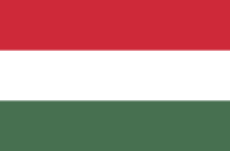 Address any requirements for implementing the Open Data Directive in your country that have not yet been addressed or that lag behind in terms of features by revising and enhancing the portal’s support for sources of real-time data. Identify the primary holders of real-time data and promote the publication of their data beyond the minimum requirements specified by law. Understand the concerns and costs of publication and work with publishers to enable the data publication process. Become aware of the requirements of the Data Governance Act and the Data Act and start exploring options to address them.
Think of ways to ensure the portal’s sustainability by enabling more contributions from the open data community (e.g. datasets submitted, reuse cases developed, and news and blog items written by the community), by providing value-added features and by exploring additional funding options.
Enforce minimum standards for the quality of metadata and data by using analytics tools to monitor data publication – for both metadata (compliance with the DCAT-AP schema) and data (publication formats). Develop validation schemas for your national portal and report back to data providers. Act on the findings and provide tailored assistance to publishers to increase the quality of publication of both metadata and data. Explore the use of AI-powered tools to improve metadata quality.
Key example
Address any requirements for implementing the Open Data Directive in your country that have not yet been addressed or that lag behind in terms of features by revising and enhancing the portal’s support for sources of real-time data. Identify the primary holders of real-time data and promote the publication of their data beyond the minimum requirements specified by law. Understand the concerns and costs of publication and work with publishers to enable the data publication process. Become aware of the requirements of the Data Governance Act and the Data Act and start exploring options to address them.
Think of ways to ensure the portal’s sustainability by enabling more contributions from the open data community (e.g. datasets submitted, reuse cases developed, and news and blog items written by the community), by providing value-added features and by exploring additional funding options.
Enforce minimum standards for the quality of metadata and data by using analytics tools to monitor data publication – for both metadata (compliance with the DCAT-AP schema) and data (publication formats). Develop validation schemas for your national portal and report back to data providers. Act on the findings and provide tailored assistance to publishers to increase the quality of publication of both metadata and data. Explore the use of AI-powered tools to improve metadata quality.
Key example
In Poland, several guidelines and tools are in place to assist data publishers in ensuring the publication of high-quality metadata. The following resources are available.
- Manual for data providers. This manual offers detailed instructions on how to publish data on the national data portal. It serves as a comprehensive guide for data providers on best practices in metadata creation and management.
- Open data programme for the years 2021–2027. This document, along with its Annex No 2 (‘Technical standard’), outlines the minimum technical requirements that data must meet to ensure consistency and quality across datasets. It is a crucial reference for use in maintaining high standards in metadata.
- Multimedia training materials. These resources provide additional guidance through video tutorials and other multimedia formats, making it easier for providers to understand and implement the guidelines.
- Tools. A data validator and data quality verifier are available to assist in monitoring and verifying the quality of metadata. These tools help ensure that the published metadata adheres to the required standards and is of high quality.
Example provided by
Poland

Cluster motto:
Strengthen open data ecosystems, prioritise high-value datasets, ensure metadata quality and comply with the Open Data Directive
Enhance and consolidate the open data ecosystems you support by developing thematic communities of providers and reusers. Continue to prioritise the categories specified for high-value datasets.
Steer the network of open data officers to enable data-driven policymaking at their level of government, delegating and decentralising monitoring activities. Keep consistent the connection between the national strategy and objectives and the needs of the agencies and local authorities, which will gain prominence over time.
Key example
Estonia has a strong governance structure for open data led by the Ministry of Economic Affairs and Communications, which coordinates efforts through an Interdepartmental Open Data Working Group and the Data Stewards Steering Group. These bodies engage over 600 public sector officials and stakeholders from civil society, academia and the private sector, fostering collaboration through events such as the Open Data Forum. The working group meets regularly to share updates and discuss developments, while the Data Stewards Steering Group focuses on sustainable data practices, including data quality, reuse, life-cycle management and protection.
Example provided by
Estonia
 Define and develop a strategy to ensure the sustainability of the national and local open data portal infrastructure. Experiment with alternative funding models. Share the outcome of your experimentation with other countries.
Key example
Define and develop a strategy to ensure the sustainability of the national and local open data portal infrastructure. Experiment with alternative funding models. Share the outcome of your experimentation with other countries.
Key example
In Ukraine, for example, the Ministry of Digital Transformation has taken steps to ensure the portal’s sustainability by preparing a technical task and a feasibility study for its modernisation. Key documents include the results of the portal audit, the technical task and the feasibility study, which assessed both technical and economic factors. Additionally, Ukraine’s draft Strategy for the Development of the Open Data Sphere defines an operational action plan for each strategic goal. It outlines specific measures, expected results, deadlines and responsible actors. One of the key strategic goals is the enhancement of the accessibility and capabilities of the Unified State Web Portal of Open Data.
Example provided by
Ukraine
 Collaborate with other national data teams, universities, research institutions and data.europa.eu to develop an impact assessment framework. Also, start developing country-specific metrics to measure impact beyond output metrics. Consider options to assess both open data and data altruism initiatives. Operationalise metric monitoring and impact evaluation. Rely on a mix of methods (e.g. ex ante and ex post analyses, structured/semi-structured interviews, use cases and log analyses from the national portal) to ensure a variety of insights. Improve the method iteratively over time.
Key example
Collaborate with other national data teams, universities, research institutions and data.europa.eu to develop an impact assessment framework. Also, start developing country-specific metrics to measure impact beyond output metrics. Consider options to assess both open data and data altruism initiatives. Operationalise metric monitoring and impact evaluation. Rely on a mix of methods (e.g. ex ante and ex post analyses, structured/semi-structured interviews, use cases and log analyses from the national portal) to ensure a variety of insights. Improve the method iteratively over time.
Key example
The data.gouv.fr team conducted an extensive impact survey to measure how open data influences various sectors. The survey was guided by a methodology developed in France for impact measurement, which was also inspired by the European work, specifically the Indicators for an Open Data Impact Assessment framework. This framework is structured to measure the effects of open data in multiple dimensions, including governmental, environmental, social and economic impacts. The two main components of the framework are as follows.
- Outputs. The study measured indicators such as the number of datasets, views, downloads, reuses and discussions in 2023, helping to quantify data usage and engagement.
- Outcomes. Reuse cases were selected from the data.gouv.fr reuse catalogue, from the beta.gouv.fr platform for digital public services and from research publications. These cases were chosen based on their potential impact, the available information and their relevance across the four impact categories.
Example provided by
France
 Continue to assess the impact of open data across sectors at both the micro- and the macroeconomic level. Showcase reuse cases of open data in the economic, environmental and social domains to enhance and measure the impact of open data and to create a culture of open data. Ensure that this impact is measured objectively thanks to a clear definition of open data impact. Iterate annually or biannually to observe change and refine activities and goals. Leverage the momentum created by showcasing the results and rally stronger political support.
Harness the wisdom of the crowd by enabling the broader open data community to contribute more to national open data programmes. Enable reusers to upload their own data and showcase their ideas and creations on the national portal. Ensure publishers improve their data publication based on reusers’ feedback and ratings.
Key example
Continue to assess the impact of open data across sectors at both the micro- and the macroeconomic level. Showcase reuse cases of open data in the economic, environmental and social domains to enhance and measure the impact of open data and to create a culture of open data. Ensure that this impact is measured objectively thanks to a clear definition of open data impact. Iterate annually or biannually to observe change and refine activities and goals. Leverage the momentum created by showcasing the results and rally stronger political support.
Harness the wisdom of the crowd by enabling the broader open data community to contribute more to national open data programmes. Enable reusers to upload their own data and showcase their ideas and creations on the national portal. Ensure publishers improve their data publication based on reusers’ feedback and ratings.
Key example
Each dataset on Sweden’s national portal includes a dedicated section where users can discuss the data and ask questions. Additionally, every dataset features a feedback button that links to the community, which allows users to contact the publishing organisation for enquiries, feedback and requests regarding the information on this page. Users can also contact the dataset owner directly through the contact information provided on each data page.
Example provided by
Sweden
 Continue improving the quality of metadata and data by boosting the use of tools on your portal (e.g. for metadata validation). Explore the use of AI-powered tools to improve metadata quality. Enable automated notifications to publishers to alert them of issues. Provide tools to convert data to alternative formats, possibly replacing non-machine-readable, proprietary formats. Invest in the portal to use new workflows and tools that enable the best understanding of your reusers’ profiles and needs while preserving their privacy.
After establishing an effective system for labelling and filtering high-value datasets on the portal, focus on maintaining this system and regularly monitoring dataset usage. Prioritise understanding the reuse cases of high-value datasets and their potential positive impact on society. As part of this effort, publish and promote successful reuse cases on the portal and regularly interact with data providers and users to better understand their needs and to explore potential implementations of these datasets.
Key example
Continue improving the quality of metadata and data by boosting the use of tools on your portal (e.g. for metadata validation). Explore the use of AI-powered tools to improve metadata quality. Enable automated notifications to publishers to alert them of issues. Provide tools to convert data to alternative formats, possibly replacing non-machine-readable, proprietary formats. Invest in the portal to use new workflows and tools that enable the best understanding of your reusers’ profiles and needs while preserving their privacy.
After establishing an effective system for labelling and filtering high-value datasets on the portal, focus on maintaining this system and regularly monitoring dataset usage. Prioritise understanding the reuse cases of high-value datasets and their potential positive impact on society. As part of this effort, publish and promote successful reuse cases on the portal and regularly interact with data providers and users to better understand their needs and to explore potential implementations of these datasets.
Key example
The processes for monitoring and measuring the reuse of high-value datasets often involve using national portals for data management, legislative requirements for metadata provision and structured reporting mechanisms. For example, in Hungary, governmental bodies monitor the availability and reuse of high-value datasets primarily through the National Open Data Portal. Act CI of 2023 (on the system for using national data assets and individual services) mandates that all public bodies provide metadata to the national portal, facilitating oversight. The National Data Asset Management Agency serves as a central contact point for requests relating to high-value datasets.
Example provided by
Hungary
 Evaluate options to extend open data portals to take the role of a public register of data-altruism organisations or advise your public administration on which formula would best support the new initiatives. Even though ODM focuses on the Open Data Directive, open data portals can be leveraged in efforts to implement other EU legislation, such as the Data Governance Act and the Data Act. For example, open data portals can be used to improve the visibility of public sector information, including protected data. For real-time data in particular, link to various sources and evaluate means of incentivising custodians to publish beyond the minimum legislative requirements.
Work with training institutions to provide advanced open data courses and training, and tailor training curricula to involve more advanced topics. Such training can include compliance with open data laws and data literacy. Make such courses formally recognised and provide certification upon successful completion.
Evaluate options to extend open data portals to take the role of a public register of data-altruism organisations or advise your public administration on which formula would best support the new initiatives. Even though ODM focuses on the Open Data Directive, open data portals can be leveraged in efforts to implement other EU legislation, such as the Data Governance Act and the Data Act. For example, open data portals can be used to improve the visibility of public sector information, including protected data. For real-time data in particular, link to various sources and evaluate means of incentivising custodians to publish beyond the minimum legislative requirements.
Work with training institutions to provide advanced open data courses and training, and tailor training curricula to involve more advanced topics. Such training can include compliance with open data laws and data literacy. Make such courses formally recognised and provide certification upon successful completion.
Resources
2024 Open Data Maturity Report – RecommendationsEnglishDownload
To identify affinities, the participating countries are grouped into four clusters based on their overall maturity scores. Countries in the same cluster can discuss strategies to overcome shared challenges. Moreover, countries in less mature clusters can learn from those in more mature clusters. Clustering also enables more focused recommendations to be formulated for each group of countries.
Cluster motto: Build momentum for open data progress
Malta’s Public Administration Data Strategy 2023–2027, inspired by its Economic Vision 2021–2031, National Digital Strategy and Five-Year Strategy for the Public Service, addresses key data challenges and developments. Its vision is to create a data-empowered society with transparent, effective and regulated data governance. The strategy aims to enhance public trust and accountability by making government data more accessible while fostering innovation and economic growth by enabling businesses to use public data for new products and services. Key steps include improving data accessibility through user-friendly formats, collaborating with stakeholders to prioritise valuable datasets and establishing clear governance structures. It also promotes international standards for data publication to ensure consistency and interoperability across platforms.
Croatia fosters collaboration across government bodies through the Working Group for the Coordination of State Information Infrastructure Projects and Digital Transformation. This group, which includes representatives from various governmental entities responsible for digitalisation, such as the open data team and open data officers, meets regularly to discuss updates and share progress on digital transformation initiatives.
The Ministry of Digital Transformation of Ukraine organises various events to engage with civil society on topics such as open data’s role in the low-carbon economy. The ministry launched the Open Data for Business series on the Diya.Osvita platform, explaining open data’s benefits for business development. Additionally, educational training sessions on Open Data for the Public and Business were held to teach activists, journalists and researchers how to use open data for transparency and research. A training course for journalists was also launched, focusing on data analysis and visualisation skills.
In Bulgaria, the Network of Open Data Liaison Officers is made up of representatives of all Bulgarian public authorities, coordinated by the national open data team. The network meets periodically to discuss the promotion and monitoring of open data within their organisations and with stakeholders. The national open data team also uses this network to send information to all public bodies, such as information about events, training, new portal features and support. The members of this network are also the points of contact for specific enquiries about the reuse of data published by their organisation, ensuring that responses are provided to requests and questions.
In Luxembourg, various activities are implemented to assist data owners in opening their datasets. For example, advisory meetings are held where data owners discuss their datasets and inventory documents, allowing for the identification of obstacles that may have hindered data openness. The team offers legal guidance and technical support, develops custom harvester scripts, assists data owners in creating automated publication scripts and maintains centralised infrastructures (e.g. the national Inspire platform, the national geoportal and the HVD4Gov platform). These efforts streamline the preparation, description, modification and publication of data, ensuring efficient and accessible data sharing. These infrastructures establish a clear workflow that ensures data becomes accessible as open data, and that it is searchable, downloadable or usable via application programming interfaces and web services on the national open data portal.
Portugal fosters engagement with key data holders through various initiatives, including webinars, workshops, public presentations, datathons and hackathons, to promote dialogue and encourage public bodies to monitor the reuse of their published data. Examples include events such as the Data Strategy in Public Administration webinar, the High-Value Datasets workshop and Open Data Day. Additionally, direct contact with data publishers via the national data portal is maintained to monitor portal activity and incentivise public entities to track user engagement.
In Slovenia, the Decree on Communication and Re-use of Public Sector Information of Public Character further specifies a list of national databases that qualify as high-value datasets. The decree introduces metadata schema enhancements, allowing each database of high-value datasets to be clearly identified. As a result, users can easily filter and access these databases on the national open data portal and view all high-value datasets.
Finland provides comprehensive guidance on its national open data portal regarding the publication of data and metadata. The page includes a summary of relevant terminology; reasons metadata is important; how to publish data with its relevant metadata; and best practices from other public organisations. Additionally, it provides resources such as training courses on improving the quality of open data and its metadata.
A significant initiative supporting Ireland’s goals is the Open Data Engagement Fund, which provides funding for projects aimed at enhancing the availability and use of open data. This includes outreach and advocacy activities, such as seminars, workshops and conferences, to encourage public bodies to release and use open data. The fund also supports innovative uses of open data, such as the creation of apps, new products or services, hackathons and interactive visualisations, leveraging data from data.gov.ie either alone or combined with other sources. Additionally, it finances research and special projects that use specific datasets to improve efficiency in public bodies, inform government decision-making and explore pressing social issues such as housing, the environment and transport.
Cluster motto: Establish open data foundations and aim for higher quality
Denmark updates its national open data strategy through continuous improvement at the operational, strategic and international levels. The team managing the portal focuses on onboarding authorities, leveraging political agendas and aligning with EU standards, such as by harmonising metadata and interpreting legal requirements. Strategic direction is shaped at two levels: national and joint government. At the national level, EU legislation is incorporated into Danish law, guiding decisions such as reusing the national data portal for Data Governance Act purposes. Funding and political support are driven by national digital government strategies and state budget allocations. At the joint government level, municipalities, regions and the national government collaborate on four-year digital government strategies. These strategies offer opportunities to adapt open data policies in response to legislative changes, political priorities, technological advancements and past experiences.
In Estonia, a comprehensive governance structure is in place to facilitate the participation and inclusion of various open data stakeholders. Firstly, the Ministry of Economic Affairs and Communications leads open data policy and has established an Interdepartmental Open Data Working Group, along with a Data Stewards Steering Group, to coordinate its network of over 600 public sector officials through information sharing, surveys and event promotion (e.g. the annual Open Data Forum and specialised workshops), ensuring participation and collaboration across sectors.
- Interdepartmental Open Data Working Group. This group includes members from multiple public sector organisations and ministries. It meets regularly and welcomes participation from a broad network of approximately 600 data-related experts, along with non-members from civil society, private companies and academia, to share updates, exchange experiences and discuss upcoming developments.
- Data Stewards Steering Group. Established by the Ministry of Economic Affairs and Communications together with other public authorities, the Data Stewards Steering Group brings together data stewards from various public authorities to ensure the sustainable and balanced development of the data field. This group focuses on topics such as data retrieval, data quality improvement, data reuse, data life cycle management and data protection requirements.
The Ministry of Digital Transformation of Ukraine organises various events to engage with civil society on topics such as open data’s role in the low-carbon economy. The ministry launched the Open Data for Business series on the Diya.Osvita platform, explaining open data’s benefits for business development. Additionally, educational training sessions on Open Data for the Public and Business were held to teach activists, journalists and researchers how to use open data for transparency and research. A training course for journalists was also launched, focusing on data analysis and visualisation skills.
In France, the ministerial roadmaps on data, algorithms and source code policy include 19 commitments specifically focused on fostering community engagement and knowledge exchange with data reusers, civil-society organisations, academia, journalists and businesses. The central open data team within Etalab plays a pivotal role in facilitating these exchanges. Key activities include the following.
- Participating in events organised by the French Information Industry Grouping and its Working Group on Open Data. This includes discussions and knowledge sharing on open data policies and practices (more details are available at GFII Open Data Group).
- Engaging with data producers and reusers prior to implementing data schemas and publishing them on the schema.data.gouv.fr platform. An example of such discussions can be found here.
- Gathering feedback from users of the national open data portal, data.gouv.fr, particularly regarding the portal’s features and user experience. A group of beta testers has been established to provide ongoing feedback.
- Organising public demonstrations at which Etalab presents its latest advancements on the data.gouv.fr portal. These demonstrations not only showcase progress but also serve as an additional platform for public agents to collect feedback from both data reusers and data providers.
Estonia is implementing a comprehensive strategy for strengthening the data skills of its civil servants and ensuring effective data management and open data practices across the public sector. In 2024, Estonia aimed to train more than 2 500 data specialists over 10 targeted training courses and develop between one and four online courses. These training courses cover key areas such as data quality and open data publication, contributing to improved national open data standards. They have already had open data licensing training provided by Creative Commons and a data working group webinar. Estonia has also introduced detailed competence profiles for data engineers and analysts and is currently developing one for data stewards. These profiles serve as the foundation for nationwide training programmes and provide input for higher education curricula, ensuring future civil servants are equipped with relevant skills.
InPoland, several guidelines and tools are in place to assist data publishers in ensuring the publication of high-quality metadata. The following resources are available.
- Manual for data providers. This manual offers detailed instructions on how to publish data on the national data portal. It serves as a comprehensive guide for data providers on best practices in metadata creation and management.
- Open data programme for the years 2021–2027. This document, along with its Annex No 2 (‘Technical standard’), outlines the minimum technical requirements that data must meet to ensure consistency and quality across datasets. It is a crucial reference for use in maintaining high standards in metadata.
- Multimedia training materials. These resources provide additional guidance through video tutorials and other multimedia formats, making it easier for providers to understand and implement the guidelines.
- Tools. A data validator and data quality verifier are available to assist in monitoring and verifying the quality of metadata. These tools help ensure that the published metadata adheres to the required standards and is of high quality.
In Portugal, the national open data portal (dados.gov.pt) provides a dedicated ‘quality’ box within the administration area to help users improve the quality of their published dataset’s metadata. This tool offers an overview of how well the dataset’s metadata is structured, highlighting areas that could be enhanced to improve discoverability and reuse. The system automatically analyses the metadata for each dataset, assessing whether it has been correctly filled in. Based on this analysis, it suggests improvements such as adding more accurate and detailed descriptions, including additional tags or attaching resources in more open, machine-readable formats. This proactive approach to monitoring and enhancing metadata quality ensures that contributors can easily publish high-quality, reusable data, benefiting the broader open data ecosystem.
Cluster motto: Build strong open data networks and drive impactful reuse
Estonia has a strong governance structure for open data led by the Ministry of Economic Affairs and Communications, which coordinates efforts through an Interdepartmental Open Data Working Group and the Data Stewards Steering Group. These bodies engage over 600 public sector officials and stakeholders from civil society, academia and the private sector, fostering collaboration through events such as the Open Data Forum. The working group meets regularly to share updates and discuss developments, while the Data Stewards Steering Group focuses on sustainable data practices, including data quality, reuse, life-cycle management and protection.
In Croatia, the Central State Office for the Development of Digital Society and the Information Commissioner play key roles in supporting public authorities and users in the process of publishing open data. As government bodies responsible for promoting and facilitating the publication of open data at both the national and the local level, they provide assistance through the following activities:
- they organise webinars to train public authorities and stakeholders on open data, metadata publishing and data management;
- they provide guidelines to help public authorities with best practices for reusing open data and ensuring its quality.
They offer direct communication and technical and legal support to help authorities comply with laws and manage data on the national open data portal.
Sweden redesigned its national data portal with a user-centred approach, collaborating with user-experience consultants to meet diverse user needs. The redesign focused on user-driven design principles, iterative testing and continuous feedback. The revamped portal was launched with improvements, including:
- a user-friendly design and structure that enhance navigation and clarity;
- an advanced support section with filtering options for efficient data searches;
- a showcase for users to share successful data reuse cases and foster community;
- a data collaboration hub to highlight national initiatives and encourage collective reuse;
- an educational resources page offering guides and materials to promote data literacy;
- a ‘Why share data?’ section explaining the benefits, regulations and best practices;
- a results section displaying key metrics to ensure data quality and continuous improvement.
The processes to monitor and measure the reuse of high-value datasets often involve using national portals for data management, legislative requirements for metadata provision and structured reporting mechanisms. For example, in Hungary, governmental bodies monitor the availability and reuse of high-value datasets primarily through the National Open Data Portal. Act CI of 2023 (on the system for using national data assets and individual services) mandates that all public bodies provide metadata to the national portal, facilitating oversight. The National Data Asset Management Agency serves as a central contact point for requests relating to high-value datasets.
In Poland, several guidelines and tools are in place to assist data publishers in ensuring the publication of high-quality metadata. The following resources are available.
- Manual for data providers. This manual offers detailed instructions on how to publish data on the national data portal. It serves as a comprehensive guide for data providers on best practices in metadata creation and management.
- Open data programme for the years 2021–2027. This document, along with its Annex No 2 (‘Technical standard’), outlines the minimum technical requirements that data must meet to ensure consistency and quality across datasets. It is a crucial reference for use in maintaining high standards in metadata.
- Multimedia training materials. These resources provide additional guidance through video tutorials and other multimedia formats, making it easier for providers to understand and implement the guidelines.
- Tools. A data validator and data quality verifier are available to assist in monitoring and verifying the quality of metadata. These tools help ensure that the published metadata adheres to the required standards and is of high quality.
Cluster motto: Strengthen open data ecosystems, prioritise high-value datasets, ensure metadata quality and comply with the Open Data Directive
Estonia has a strong governance structure for open data led by the Ministry of Economic Affairs and Communications, which coordinates efforts through an Interdepartmental Open Data Working Group and the Data Stewards Steering Group. These bodies engage over 600 public sector officials and stakeholders from civil society, academia and the private sector, fostering collaboration through events such as the Open Data Forum. The working group meets regularly to share updates and discuss developments, while the Data Stewards Steering Group focuses on sustainable data practices, including data quality, reuse, life-cycle management and protection.
In Ukraine, for example, the Ministry of Digital Transformation has taken steps to ensure the portal’s sustainability by preparing a technical task and a feasibility study for its modernisation. Key documents include the results of the portal audit, the technical task and the feasibility study, which assessed both technical and economic factors. Additionally, Ukraine’s draft Strategy for the Development of the Open Data Sphere defines an operational action plan for each strategic goal. It outlines specific measures, expected results, deadlines and responsible actors. One of the key strategic goals is the enhancement of the accessibility and capabilities of the Unified State Web Portal of Open Data.
The data.gouv.fr team conducted an extensive impact survey to measure how open data influences various sectors. The survey was guided by a methodology developed in France for impact measurement, which was also inspired by the European work, specifically the Indicators for an Open Data Impact Assessment framework. This framework is structured to measure the effects of open data in multiple dimensions, including governmental, environmental, social and economic impacts. The two main components of the framework are as follows.
- Outputs. The study measured indicators such as the number of datasets, views, downloads, reuses and discussions in 2023, helping to quantify data usage and engagement.
- Outcomes. Reuse cases were selected from the data.gouv.fr reuse catalogue, from the beta.gouv.fr platform for digital public services and from research publications. These cases were chosen based on their potential impact, the available information and their relevance across the four impact categories.
Each dataset on Sweden’s national portal includes a dedicated section where users can discuss the data and ask questions. Additionally, every dataset features a feedback button that links to the community, which allows users to contact the publishing organisation for enquiries, feedback and requests regarding the information on this page. Users can also contact the dataset owner directly through the contact information provided on each data page.
The processes for monitoring and measuring the reuse of high-value datasets often involve using national portals for data management, legislative requirements for metadata provision and structured reporting mechanisms. For example, in Hungary, governmental bodies monitor the availability and reuse of high-value datasets primarily through the National Open Data Portal. Act CI of 2023 (on the system for using national data assets and individual services) mandates that all public bodies provide metadata to the national portal, facilitating oversight. The National Data Asset Management Agency serves as a central contact point for requests relating to high-value datasets.
Resources
Method and resources
The objective of the open data maturity (ODM) assessment is to evaluate the progress of European countries in making public sector information available and stimulating its reuse. ODM is both a benchmarking and a learning tool. The results of the assessment support countries in better understanding their relative level of maturity and document year-on-year developments in the field of open data. The assessment further aims to support the development of open data best practices across Europe, serving as a tool for knowledge sharing. The ODM report provides evidence and recommendations on activities European countries could adopt to advance their open data maturity.
Assessment methodology
The data for the ODM assessment is collected through a voluntary questionnaire sent to the open data representatives of the participating countries, working in collaboration with the European Commission and the Expert Group on Public Sector Information. Country representatives are asked questions about the processes, activities, initiatives and other demonstrable outputs in their country that characterise a mature open data ecosystem. The research team at data.europa.eu reviews the responses based on the explanations and supporting evidence, and the answers and scores are validated in a consultation round between the research team and the country representatives.
- The research team sends the voluntary questionnaire to the national representatives in each participating country who have been nominated as the survey respondents.
- The survey respondents complete the questionnaire, collecting input from across their country’s public administration.
- The research team validates the responses based on the explanations and supporting evidence provided by the survey respondents.
- A consultation round is held with the survey respondents to gain clarification on the survey data and to give them the opportunity to validate the results.
- The final data is processed and analysed to produce the annual ODM report and accompanying materials.
Scoring system
The assessment conceptualises open data maturity on four thematic dimensions: policy, portal, quality and impact. Each of these dimensions is further detailed in sub-themes, called indicators. Countries are scored on a list of questions relating to each indicator of the assessment. Each response is allocated a score based on a predefined schema. The scores for the individual questions sum together to provide a total score for the indicators. In turn, the indicator scores are added together to give the scores for the dimensions. The overall maturity score is calculated as a weighted percentage of the four dimensions, meaning that each dimension contributes 25 % towards the overall maturity score. Ties in ranking are resolved based on the percentage maturity score rounded to one decimal point. (For ties, the display order in charts is determined by alphabetical or protocol order of country names, depending on the grouping of the chart). Besides the scored questions (see infographic), additional qualitative insights are gathered through a limited number of non-scored questions.
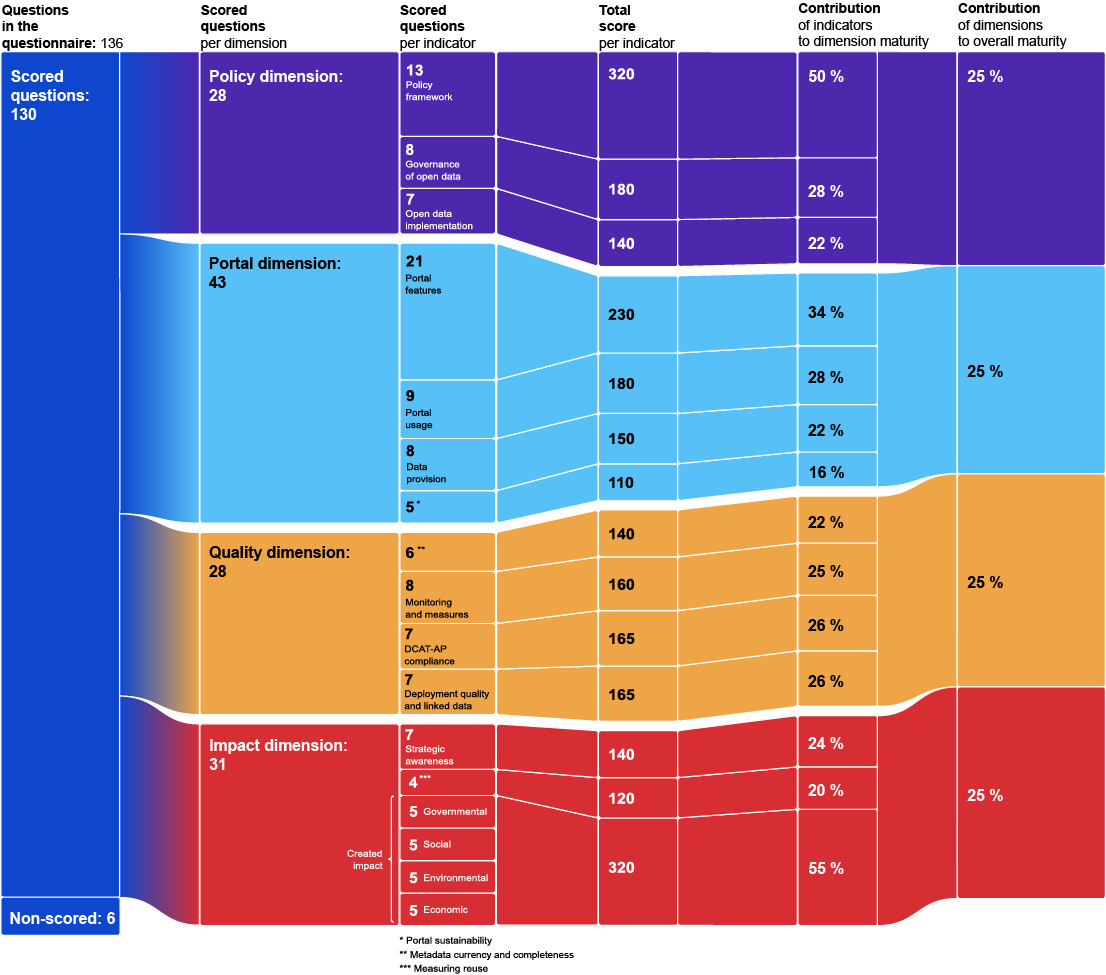
Resources
The objective of the open data maturity (ODM) assessment is to evaluate the progress of European countries in making public sector information available and stimulating its reuse. ODM is both a benchmarking and a learning tool. The results of the assessment support countries in better understanding their relative level of maturity and document year-on-year developments in the field of open data. The assessment further aims to support the development of open data best practices across Europe, serving as a tool for knowledge sharing. The ODM report provides evidence and recommendations on activities European countries could adopt to advance their open data maturity.
Assessment methodology
The data for the ODM assessment is collected through a voluntary questionnaire sent to the open data representatives of the participating countries, working in collaboration with the European Commission and the Expert Group on Public Sector Information. Country representatives are asked questions about the processes, activities, initiatives and other demonstrable outputs in their country that characterise a mature open data ecosystem. The research team at data.europa.eu reviews the responses based on the explanations and supporting evidence, and the answers and scores are validated in a consultation round between the research team and the country representatives.
- The research team sends the voluntary questionnaire to the national representatives in each participating country who have been nominated as the survey respondents.
- The survey respondents complete the questionnaire, collecting input from across their country’s public administration.
- The research team validates the responses based on the explanations and supporting evidence provided by the survey respondents.
- A consultation round is held with the survey respondents to gain clarification on the survey data and to give them the opportunity to validate the results.
- The final data is processed and analysed to produce the annual ODM report and accompanying materials.
Scoring system
The assessment conceptualises open data maturity on four thematic dimensions: policy, portal, quality and impact. Each of these dimensions is further detailed in sub-themes, called indicators. Countries are scored on a list of questions relating to each indicator of the assessment. Each response is allocated a score based on a predefined schema. The scores for the individual questions sum together to provide a total score for the indicators. In turn, the indicator scores are added together to give the scores for the dimensions. The overall maturity score is calculated as a weighted percentage of the four dimensions, meaning that each dimension contributes 25 % towards the overall maturity score. Ties in ranking are resolved based on the percentage maturity score rounded to one decimal point. (For ties, the display order in charts is determined by alphabetical or protocol order of country names, depending on the grouping of the chart). Besides the scored questions (see infographic), additional qualitative insights are gathered through a limited number of non-scored questions.






